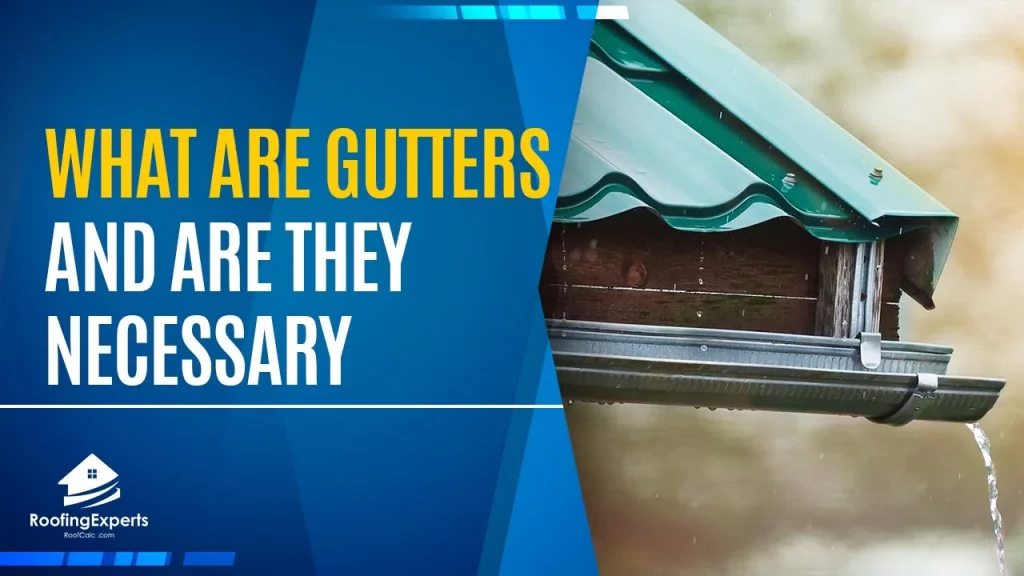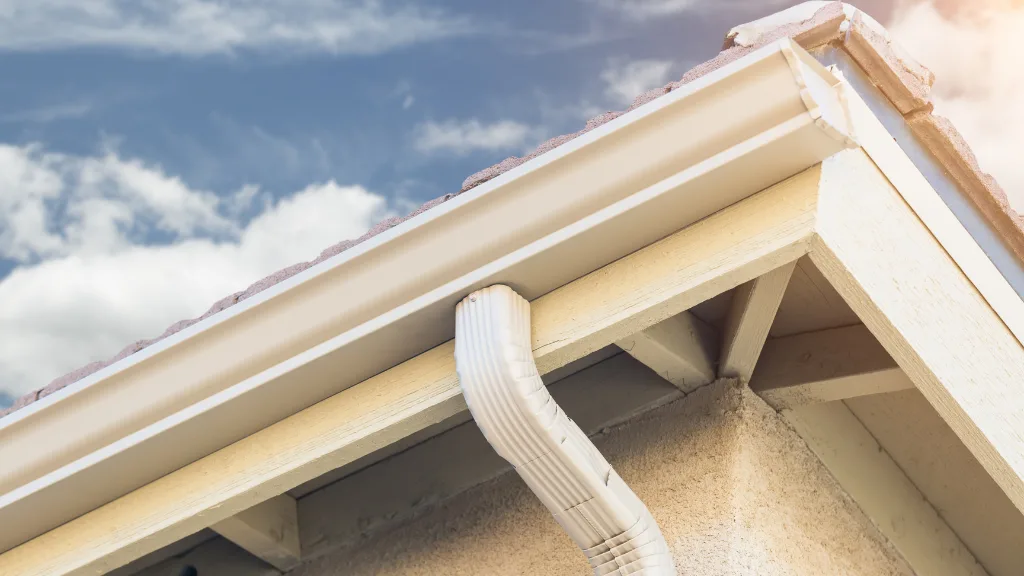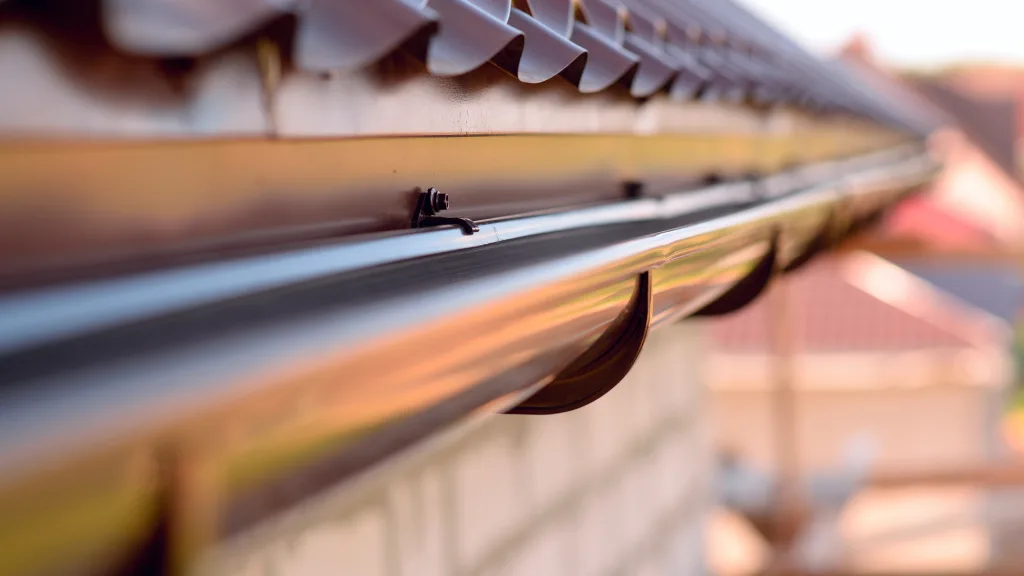
What Are Gutters? Gutters are a necessary part of any building. They provide a space for water to flow off the roof and down the sides of your house, out from under your feet. Gutters can be made from aluminum, copper, steel or plastic.
Aluminum gutters corrode over time but they are less expensive than other materials and resist dents which helps keep them looking good even after many years in service.
Copper gutters will last as long as you need them to if you take care of them properly by washing with soap and water every couple months and applying a coat of wax occasionally during those times when it’s not raining often enough to cleanse the metal surface on its own.
Steel gutters should also be washed periodically because they tend
Plastic gutters are low priced and can be cut to fit any gutter. They tend to last a long time, but they will fade after several years in the sunlight once it has been exposed for an extended period of light exposure.
What Are Gutters For?
Gutters are typically installed from the outside by mounting them on brackets that come with each section when you buy gutters in roll form.
These brackets are placed on the roof and then each section is mounted in place, usually by two screws that attach it to the facing of your home’s exterior wall.
This allows water from rain or melted snow to run down towards a spout at one end where it spills out away from your home and into some area such as an open drain or a flower bed.
These gutters are very important if you have wood siding, aluminum clapboard or stucco in place on your home because they will keep these surfaces from rotting or warping due to excess moisture that gets trapped behind them after the rain stops falling.
This is why it’s so important for homeowners with any of these types of siding to make sure their gutters are always in place and free from damage.
How Are Gutters Installed?
The first step is to cut down any tree branches hanging over your home so they don’t interfere with the installation process or worse, fall onto your roof while you’re working on it.
Then, you need to measure the length of your gutters from end to end and cut them in half if they are too long.
Once this is done, install a gutter section against an exterior wall with two screws at each corner or midpoint until it is fastened securely into place.
Repeat this process for all sections you have available based on the measurements you took earlier.
Screw your downspout into its proper place and then cut it to match the length of each section that comes before it all along one edge so they flow together seamlessly when looking at them from above.
Once this is done, go back over each joint with caulk or sealant because these gaps can cause water leaks if they aren’t filled in tightly.
Make sure your gutters are always free of debris like leaves or pine needles that can clog up the downspouts and cause them to overflow when it rains which is why you should frequently check these spaces after every rainfall just in case something has gotten into place that shouldn’t have been there in the first place.
What Are Gutters Good For?
These gutters are good for keeping rain water from creating puddles in places where it might run into your home and cause damage to walls or even seep under doors if they aren’t sealed off tightly enough.
Gutters also allow you to attach a downspout to serve as an alternative drainage method that is safer than using pipes or other types of systems.
This can be especially helpful if your yard tends to flood after it rains because the water will travel downhill until it reaches a low point and then spill out into another area like a flower bed with gravel in place where it won’t cause any damage.
Gutters also help keep your home’s foundation in good shape by channeling away any water that might otherwise collect near or against the walls and cause it to swell.
This is why you should always make sure gutters are included with most new homes, but if they weren’t installed when yours was built then you’ll need to add them yourself.

What Are the Advantages of Gutters?
The biggest advantage to using gutters is that they help protect your home by keeping wood siding, aluminum clapboard or stucco from rotting due to moisture behind these surfaces after a rainfall.
This means you won’t have to spend money on repainting every few years because the paint will last much longer if it isn’t regularly exposed to moisture after heavy rains.
These gutters are also very useful for homes that don’t have nearby downspouts anywhere near the foundation of your home due to landscaping or other obstacles in place where water wouldn’t flow easily.
With a properly placed gutter in place, you can attach a downspout to serve as an alternative drainage method that is safer than using pipes or other types of systems.
This makes it easier to direct water away from your home and into another area like gravel where the ground will absorb most of the moisture before any damage occurs.
What Are Some Disadvantages of Gutters?
The biggest disadvantage to gutters is the fact that they can become clogged with debris like leaves or pine needles which means you’ll need to check them frequently just in case something has gotten into place that shouldn’t have been there.
If this happens, then you should clear away any foreign matter immediately so it doesn’t cause any damage to your home’s foundation or siding.
These gutters are also less useful in places where downspouts already exist near the base of your home because water will travel through these channels instead and cause flooding at ground level, which is why it can be helpful to attach a gutter along with each existing downspout if you want to divert water away from your foundation.
Another disadvantage is the fact that gutters will only work with homes built on level surfaces because it won’t be able to channel any excess rainfall if the ground isn’t flat enough for water to drain through them easily.
This means you’ll need to consider other forms of drainage like landscaping where water can be directed downhill until it reaches a low point, which will help to prevent flooding after any rainfall so you won’t have to worry about water seeping through your doors or under siding.
Final Thoughts on Gutters
Overall, gutters are a very useful tool to have even if your yard doesn’t seem to suffer from flooding after it rains.
These gutters will help you keep excess water away from the walls of your home so you won’t need to repaint every few years and they’ll also prevent siding or other surfaces near the foundation from rotting due to moisture after a rainfall.
This is why gutters are often included with any new houses, but if they weren’t installed when yours was built then you’ll need to add them yourself and make sure the downspout is connected where water can drain away from your foundation by using flexible hose connectors on each end of the gutter.


